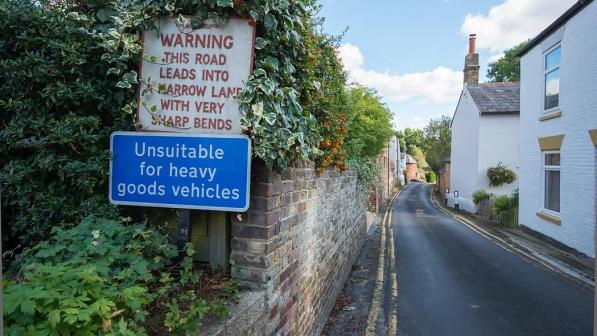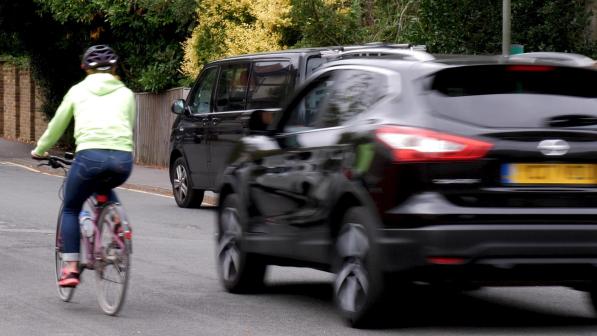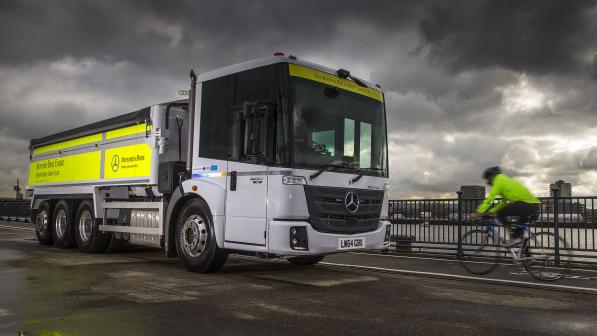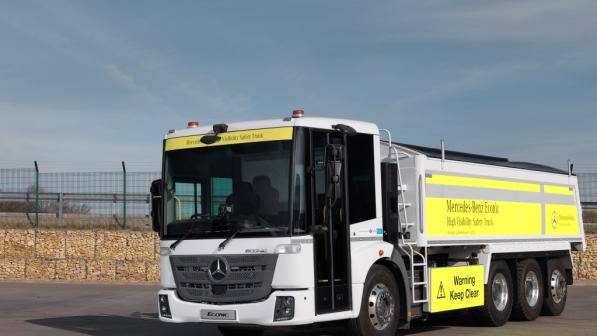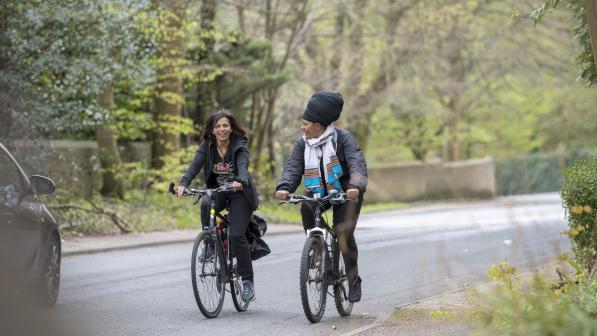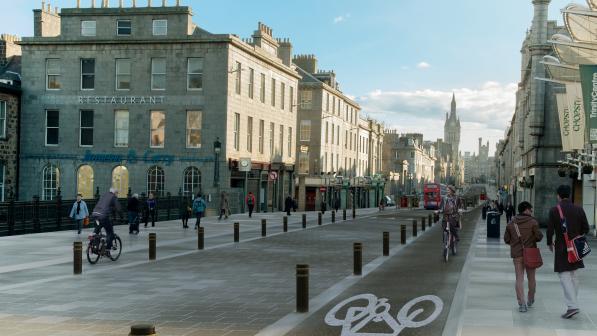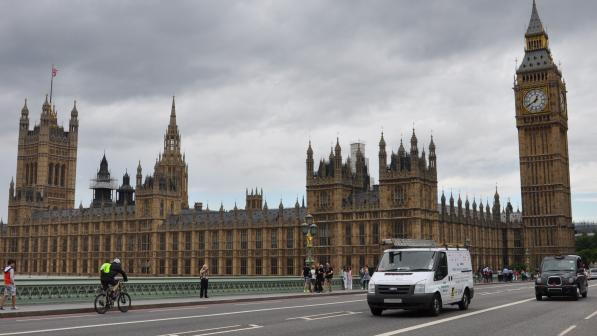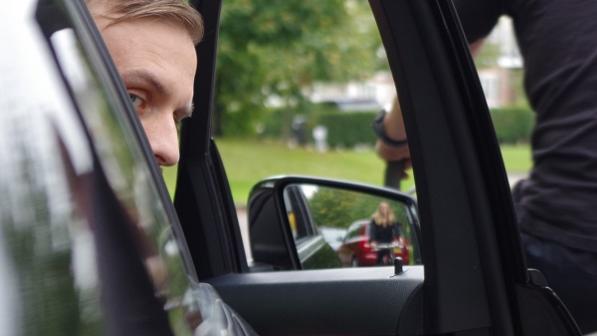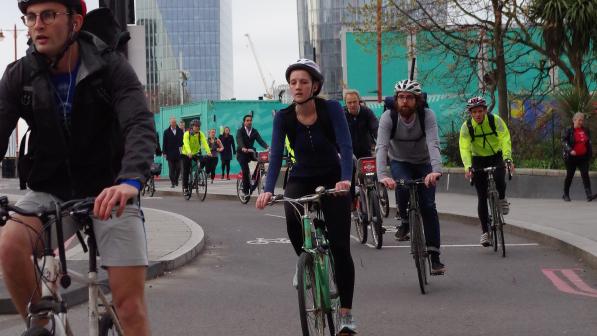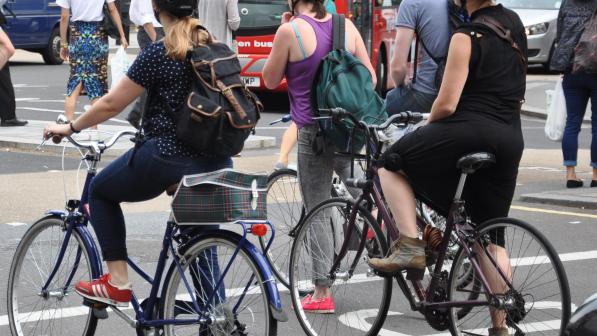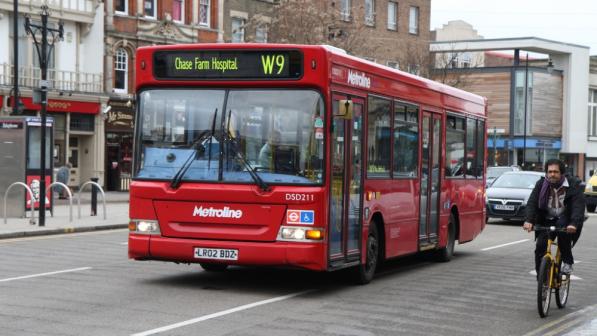Improve lorry safety to make cycling and walking safer: why wouldn’t you?

The idea behind our Cycle safety: make it simple campaign was that cycling safety is sometimes over-complicated, and that some of the measures to improve safety for people walking or cycling are really quite simple. That’s why we’ve highlighted particular problems, offered the solutions, and asked “Why wouldn’t you do it?”
Of all our ‘why wouldn’t you’ themes, the one that perhaps frustrates me the most involves vehicle design. But don’t panic – we’re not going to get too technical here; we’re going to keep this simple because, I promise you, it really is.
I can see you!
Next time you see a bin lorry, take a good look at the front: the driver’s cab. It’s likely to be what’s known as a low-entry cab (LEC), allowing the driver to step in and out of the cab rather that up some steps and into a cab with a higher seating position.
The driver will be seated close to a large glass front windscreen, with the cab looking more like the front of a bus than a traditional lorry, and with a glass panel folding door on the left-hand side, just like you have on a bus.
That’s important because it gives the driver a better view of people outside the cab, including pedestrians crossing the road in front the cab, and cyclists on the left-hand side.
But the front of the bin lorry probably won’t look much like the front of the other lorries you see in busy town centres and cities most days, because the basic design of Heavy Goods Vehicle (HGV) cabs has hardly altered since the 1970s.
The traditional high seating position may have benefits on trunk journeys along motorways, but that’s a different environment to urban driving at slower speeds, and alongside pedestrians and cyclists.
Left hooks and blind spots
We’ve tried to be positive in all of our cycle safety blogs, refraining from trotting out too many casualty statistics, but I can’t talk about lorries and cyclists without mentioning some figures.
On average, each year between 2012 and 2016, HGVs:
- Accounted for around 3.6% of non-motorway motor traffic mileage on British roads, but were involved in 17.5% of cyclist fatalities
- Were involved in almost 14% of pedestrian fatalities
- Accounted for around 2% of urban and 5% of rural motor traffic, but were involved in almost a quarter of cyclist urban fatalities
And there’s an increased risk in urban centres, particularly in London where HGVs:
- Were involved in 78% of cyclist fatalities, despite accounting for less than 4% of miles driven
- Can be a major hazard to cyclists when turning left, with 13 cyclists in London killed or seriously injured in 2015 when a HGV turned left (left hook) across their path
Most of the collisions between cyclists and HGVs occur during lorry manoeuvres or at junctions, partly because the drivers have limited ‘direct vision’ from the cab, and their working environment is mainly on off-road sites. By ‘direct vision’, we mean the driver’s ability to see what’s going on outside their cab without using indirect means such as mirrors and cameras: it’s what the driver can see directly.
Cyclists on the left of an HGV and pedestrians crossing the road in front of the cab are sometimes in the driver’s blind spot, meaning he or she can’t see them, even with their mirrors. The key issue to address when looking to reduce lorry danger, therefore, is the actual design of the cabs, and whether HGVs with cabs that don’t meet a set standard for direct vision should be permitted to operate in urban areas.
In the video below, Cynthia Barlow, whose daughter Alex was killed by a left turning lorry in 2000, explains how vital it is to eliminate blind spots.
The proposals in London
In 2016, following lobbying by Cycling UK and other organisations, the London Mayor announced plans to assess HGVs using a world-first Direct Vision Standard (DVS), supported by a safety permit scheme. Informed by collision research, DVS is a proposed five-star rating standard based on how much a driver can see of the area outside where vulnerable road users (VRU) are at most risk.
If approved, the scheme will apply to all large HGVs over 12 tonnes working in or entering London from 2020. HGVs will be given a rating of between ‘zero star’ (lowest) and ‘five star’ (highest). Only those vehicles rated ‘one star’ and above would automatically be allowed to enter or operate in London from 2020. Zero-rated vehicles would only be allowed if they can prove compliance with other safe system measures.
By 2024, only ‘three-star’-rated HGVs and above would automatically be given a safety permit. HGVs rated two star and below would need to demonstrate increased safety through progressive safe system measures.
The evidence
The scheme in London is being introduced because the evidence shows that what a HGV driver can see directly through the cab’s windows plays a major role in collisions with VRU.
While it’s not possible to retrospectively determine, with certainty, whether or not a particular HGV collision with a VRU would have been avoided if the driver’s direct vision had been better, the various studies carried out indicate that:
- 61% of cyclist fatalities in collisions with HGVs between 2009 and 2014 in London were potentially influenced by the vehicle’s blind spots
- 49% of pedestrian fatalities in collisions with HGVs between 2009 and 2014 in London were potentially influenced by the vehicle’s blind spots
- Drivers relying on mirrors rather than direct vision took on average 0.7 seconds longer to observe potential hazards around their cab, which equates to a travel distance of 1.5m at 5mph
- In simulated potential HGV collisions with a pedestrian, 23% more participant drivers collided with a pedestrian in standard cabs compared to LEC with improved direct vision
- Mirrors, which can take five seconds to check, do not provide the comprehensive coverage of the area which is directly visible from a ‘five-star’ direct-vision HGV.
In London, HGVs are overrepresented in collisions with VRU. In the last three years, they have been involved in 20% of pedestrian fatalities and over 70% of cyclist fatalities, with 116 pedestrians and cyclists killed or seriously injured in collisions with goods vehicles over 3.5 tonnes between 2013 and 2015.
Almost half (45%) of the left turn manoeuvre collisions involved tipper HGVs, and a further 55% involved other HGV types, with blind spots a significant contributory factor in these collisions.
The DVS has been specifically developed to help improve the design of HGVs by minimising blind spots, and the research shows that improved direct vision has the potential to significantly reduce HGV road risk to VRUs.
Known knowns
So, we know that:
- The casualty statistics show that HGVs present a disproportionate risk to VRUs, particularly in London
- The research identifies a solution, through improved direct vision from the cab
- Vehicles providing improved direct vision are already on the market, but we have yet to see a wide uptake, and they are far from the norm
Why wouldn’t you…?
So why wouldn’t you require lorries operating in cities and other urban areas to have cabs like bin lorries, surrounded by big glass windows to eliminate blind spots?
And why wouldn’t you want to give lorry drivers the best view of people walking and cycling, to make our cities safer for all of our families?
And why wouldn’t you introduce a national direct vision standard, to enable lorry permit schemes modelled on the scheme being introduced in London to be adopted in urban areas throughout the country?
That’s what we’re asking of the Government, but we still really need your support.
How you can help
We’ve already sent our executive summary report to the Government, containing all of our headline recommendations including improving lorry safety, and our full response will be sent next week.
However, we need as many people as possible to support what we’re calling for to make the Government listen, and then just do it.
5,500 people have done so already, and you can join them by going to our Cycle safety: make it simple campaign to take action, sending an email to the DfT adding your voice to our recommendations.
But you’ve only got until next Friday 1 June, after which the consultation closes.
If you’ve already given your support to this campaign, we’d implore you to do just one more thing – send someone you know an editable e-card telling them about this campaign. We’ve made it really simple for you to do this, and you can send the e-card to up to 10 people.
If everyone who’s supported this campaign managed to nudge one more person to respond, our voice would be that much louder – and why wouldn’t you want that?
